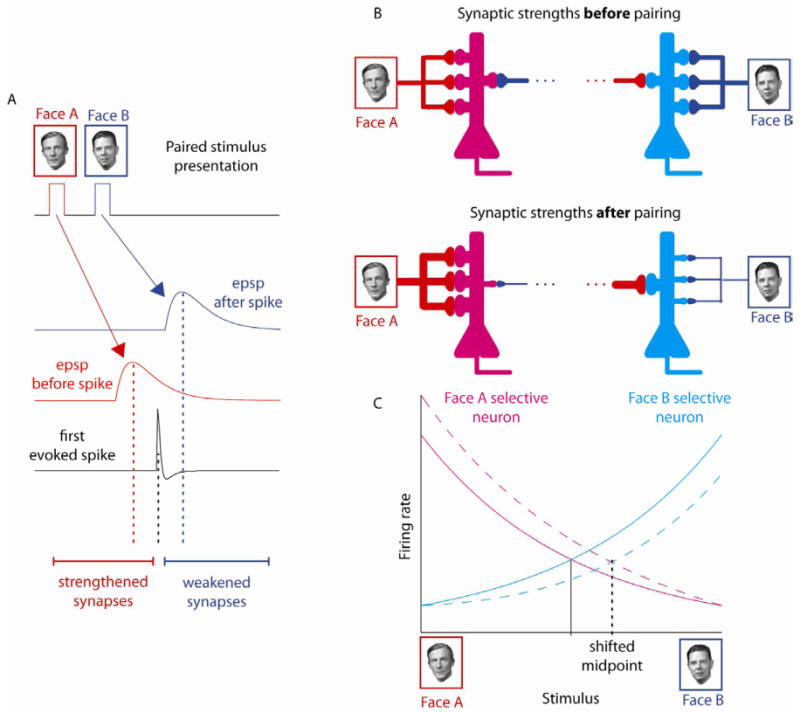Figure 2.

Expected impact of spike timing-dependent plasticity on a network of broadly-tuned face-selective neurons. A. A pair of faces flashed in rapid succession (Face A followed by Face B) will evoke temporally offset EPSPs in synapses conveying input from Face A and Face B. If the time interval between the EPSPs and the first evoked spike falls within the permissive window for spike timing-dependent plasticity, the synapses activated before the spike will be strengthened and the synapses activated after the spike will be weakened. B. After repeated pairings, the asymmetric impact of spike timing-dependent plasticity will make the network of neurons more sensitive to Face A content and less sensitive to Face B content. C. The perceptual midpoint corresponds to stimulus level that evokes equal activity in both Face A-selective and Face B-selective neurons. After biasing the inputs to the network, more Face B content is needed to achieve balanced activity. Accordingly, the perceptual midpoint will shift towards B.
